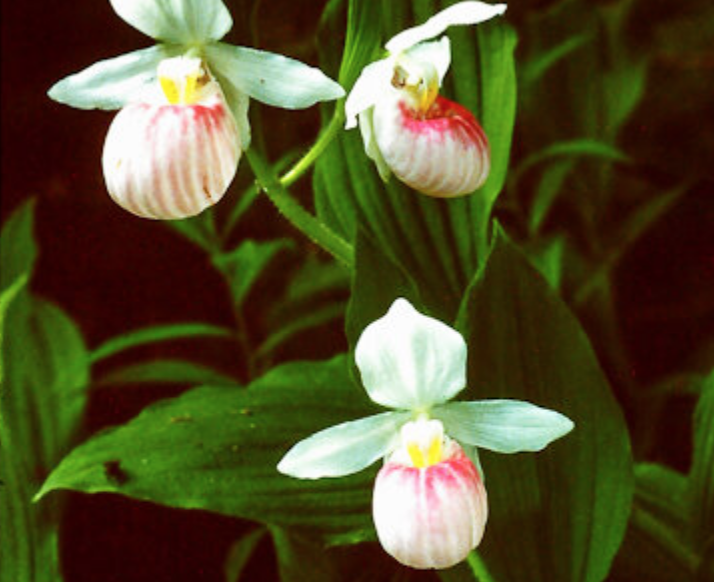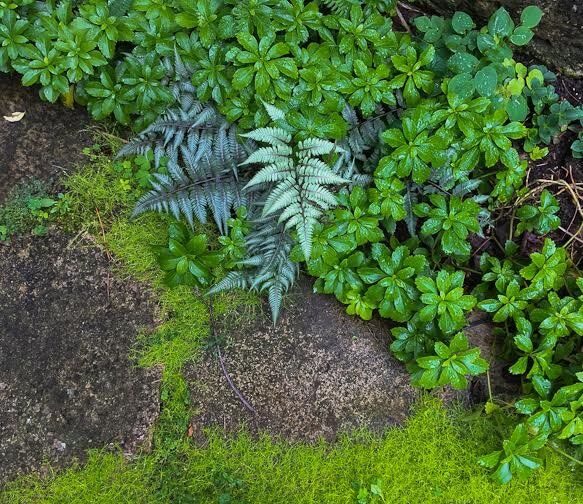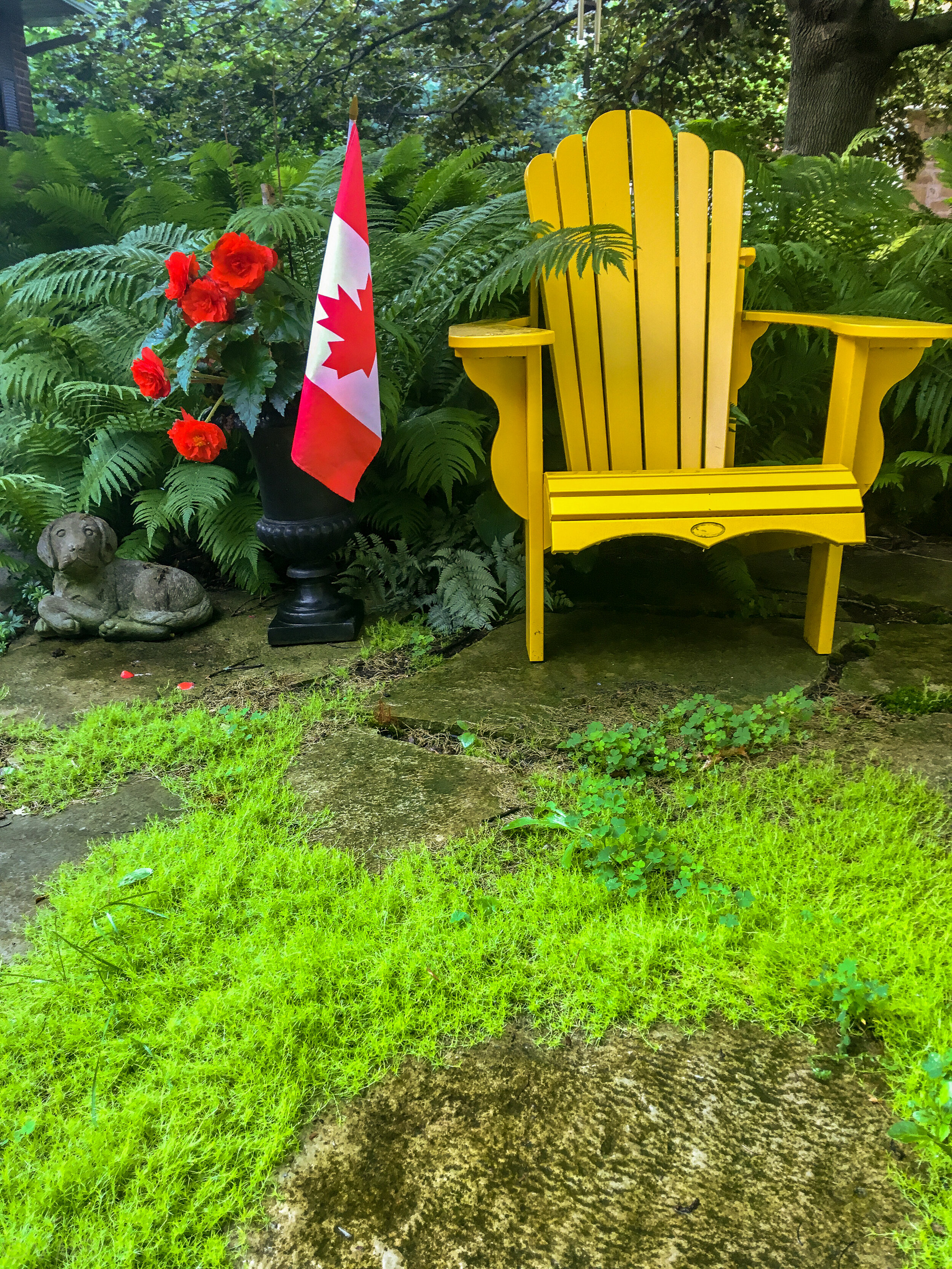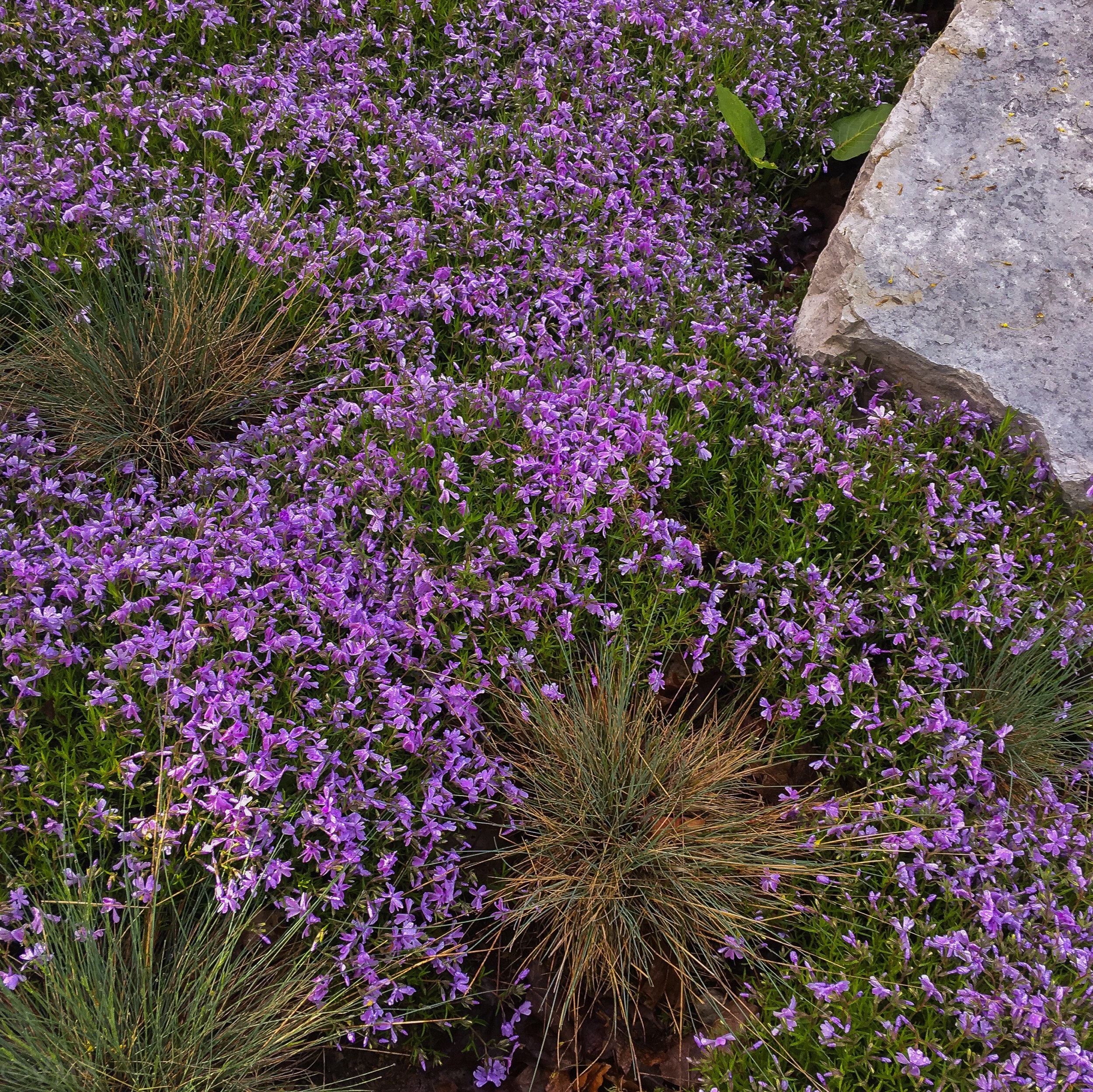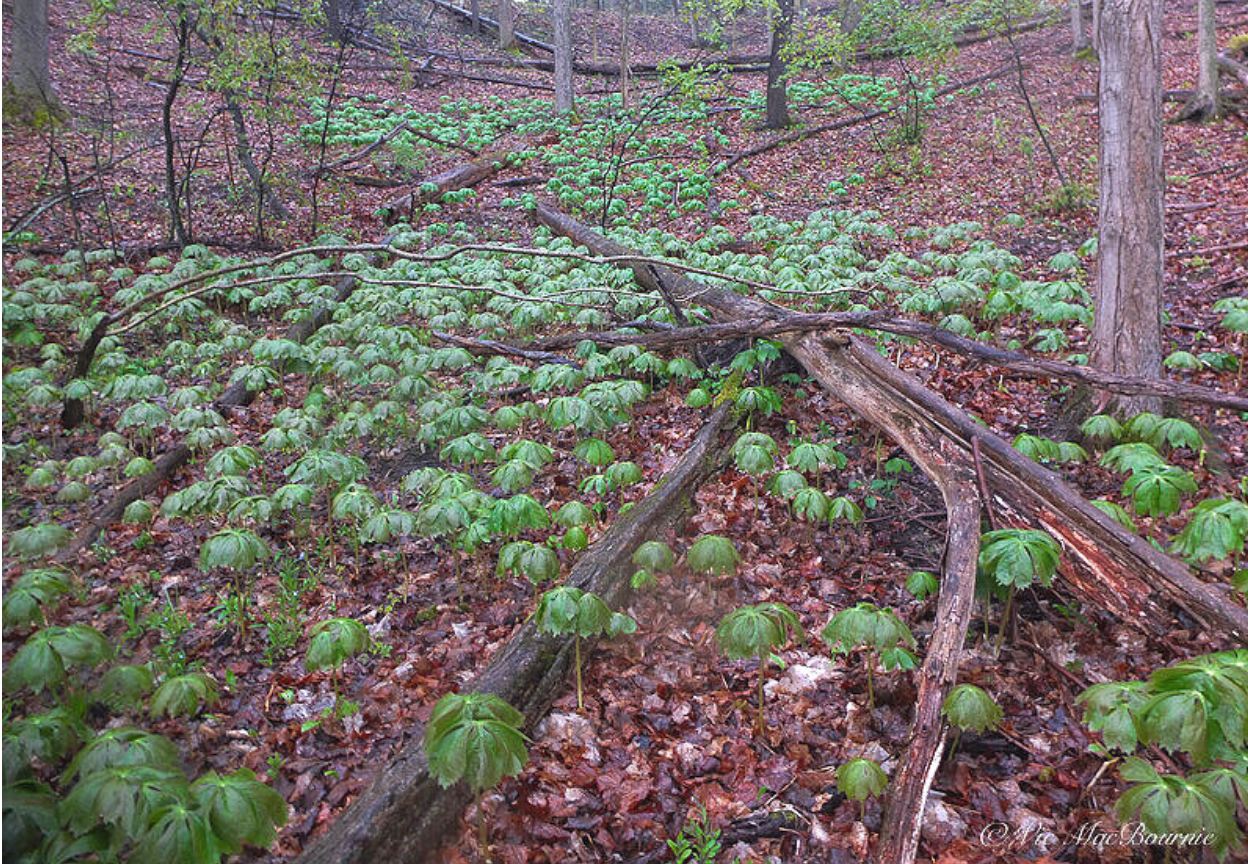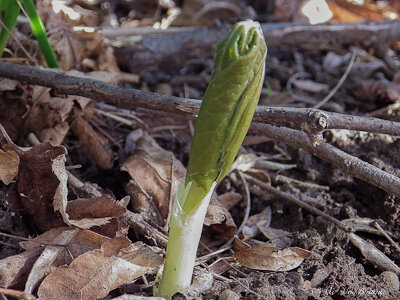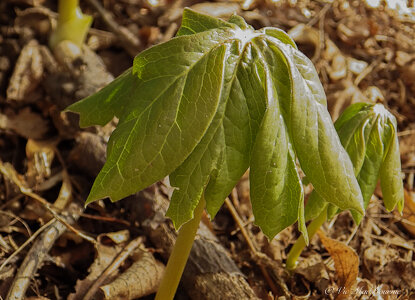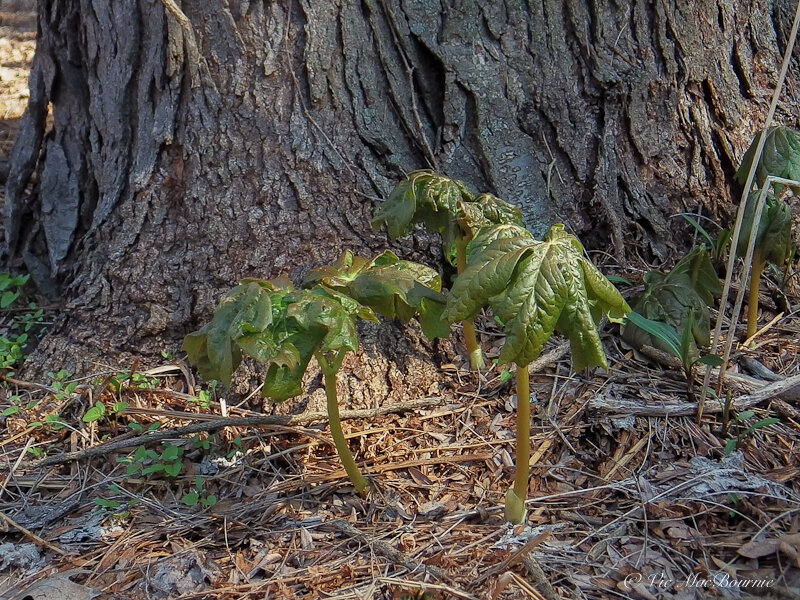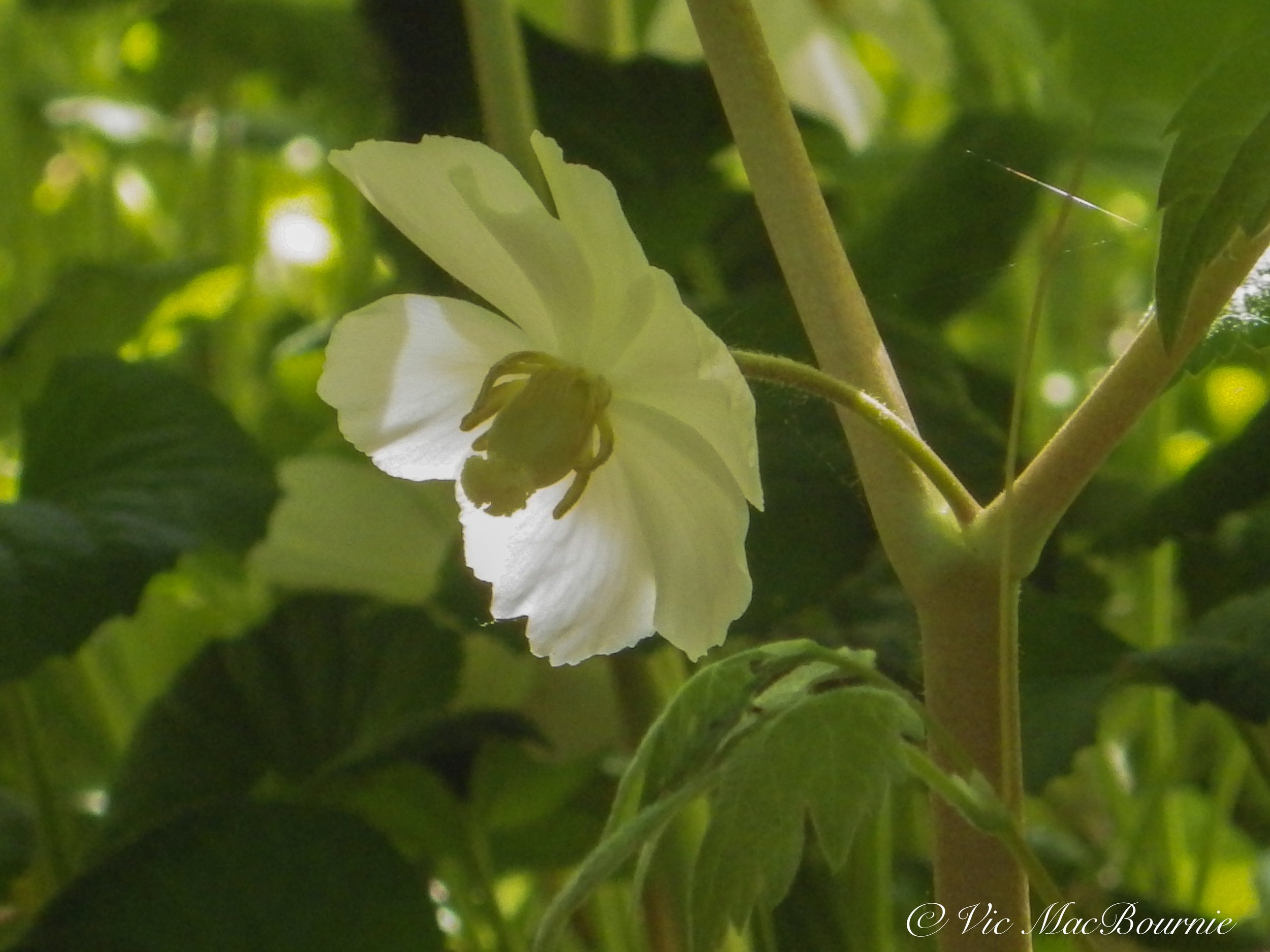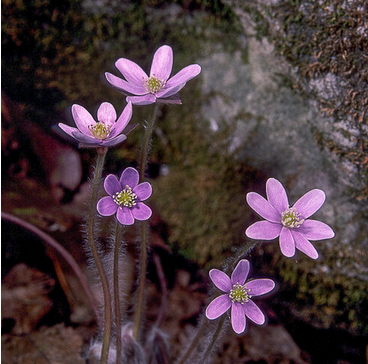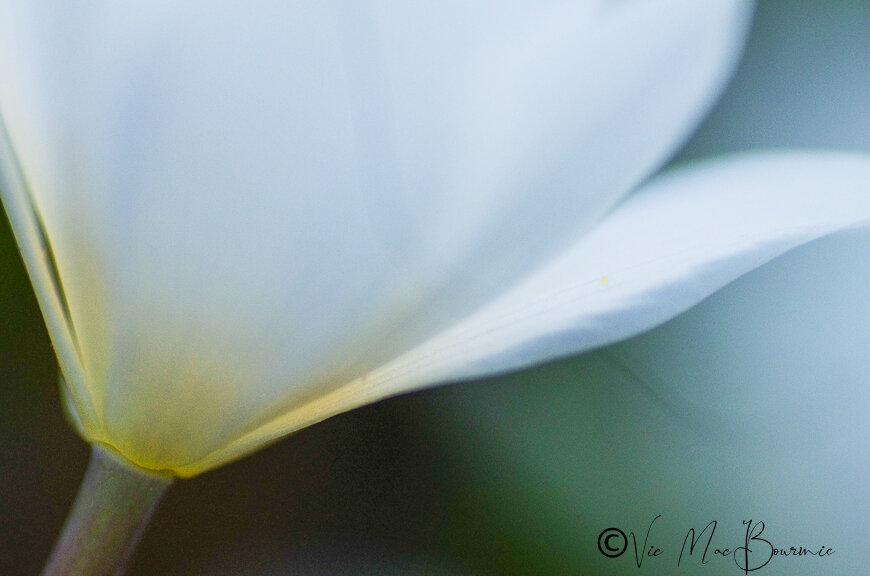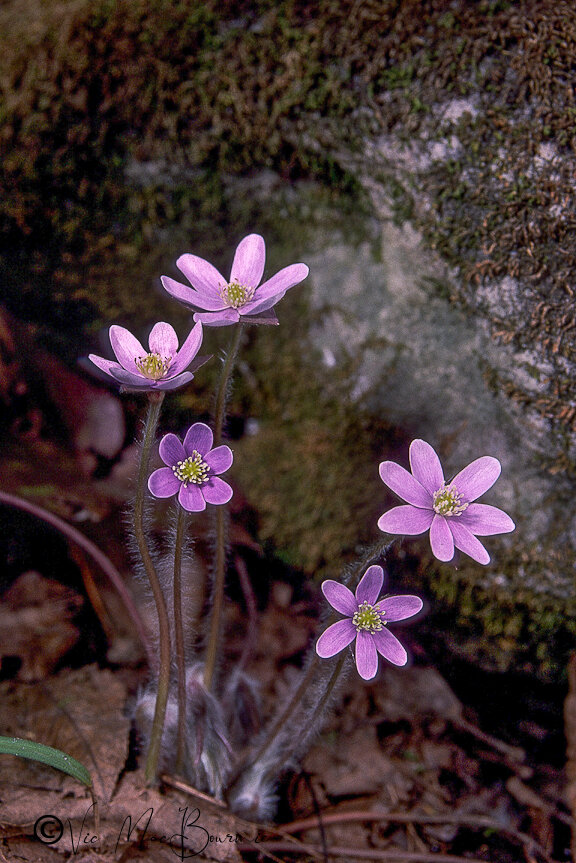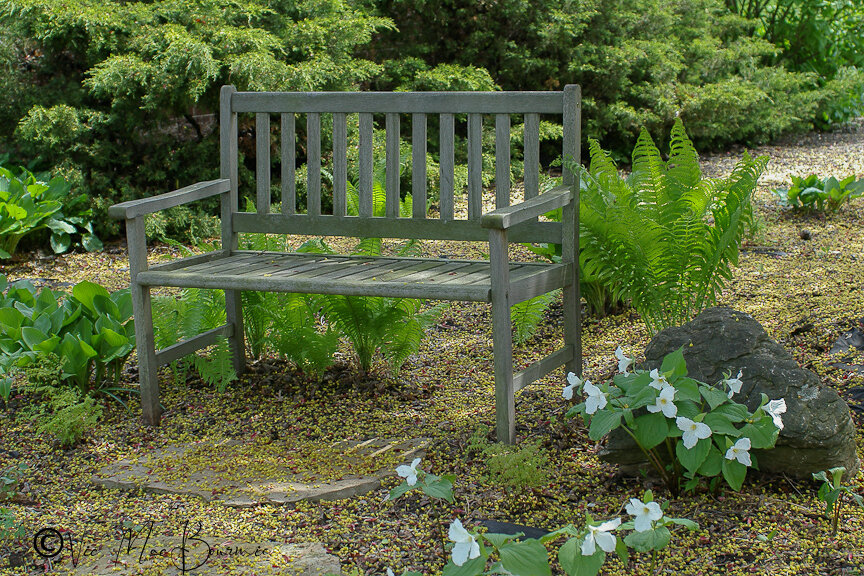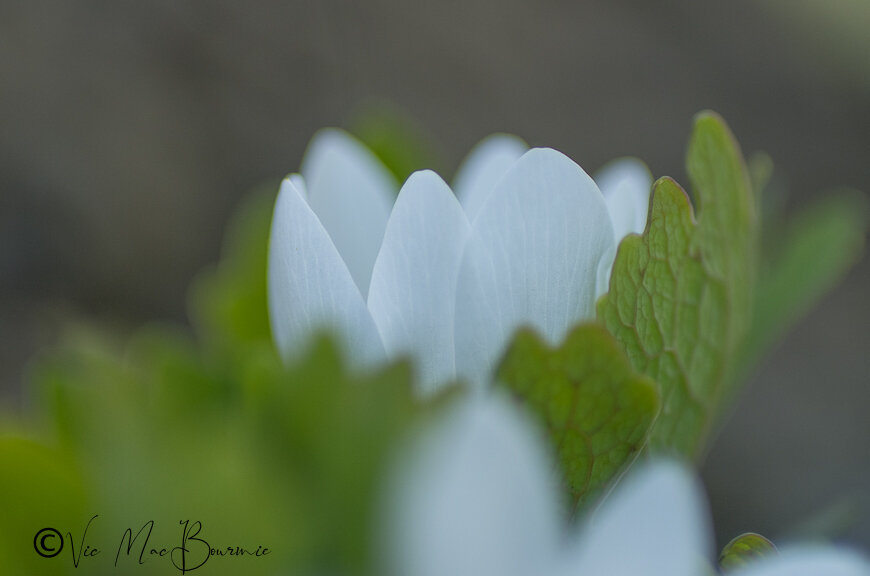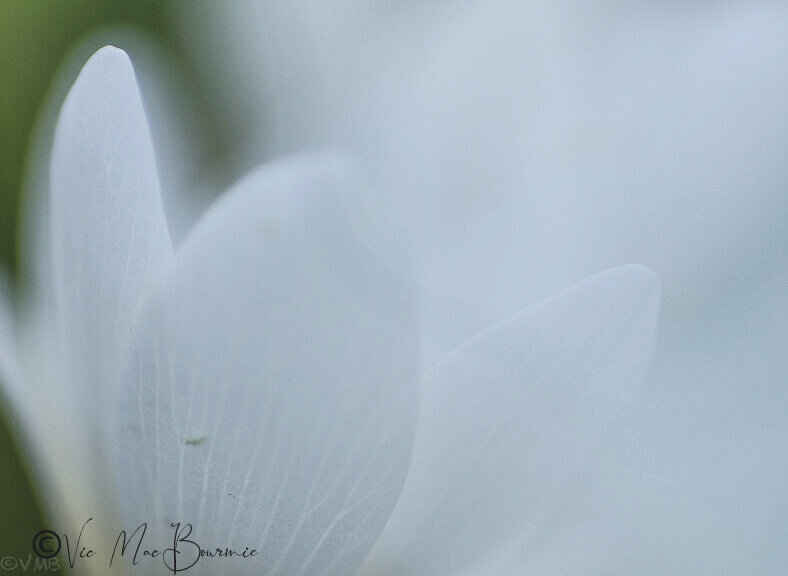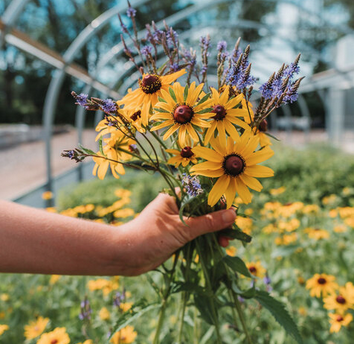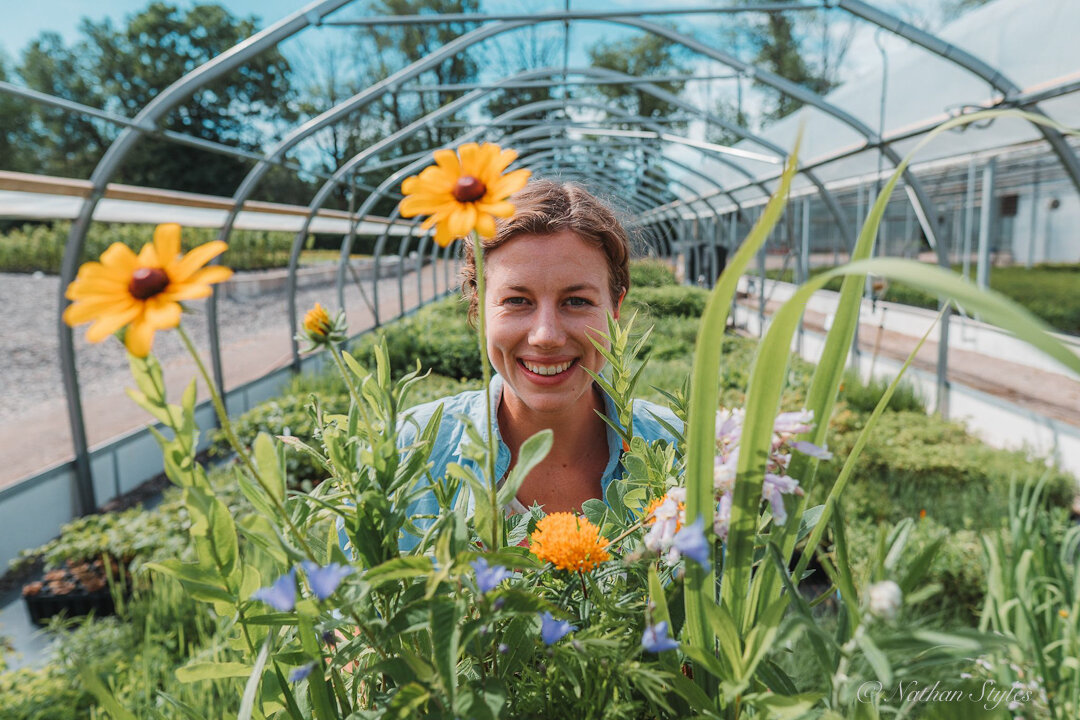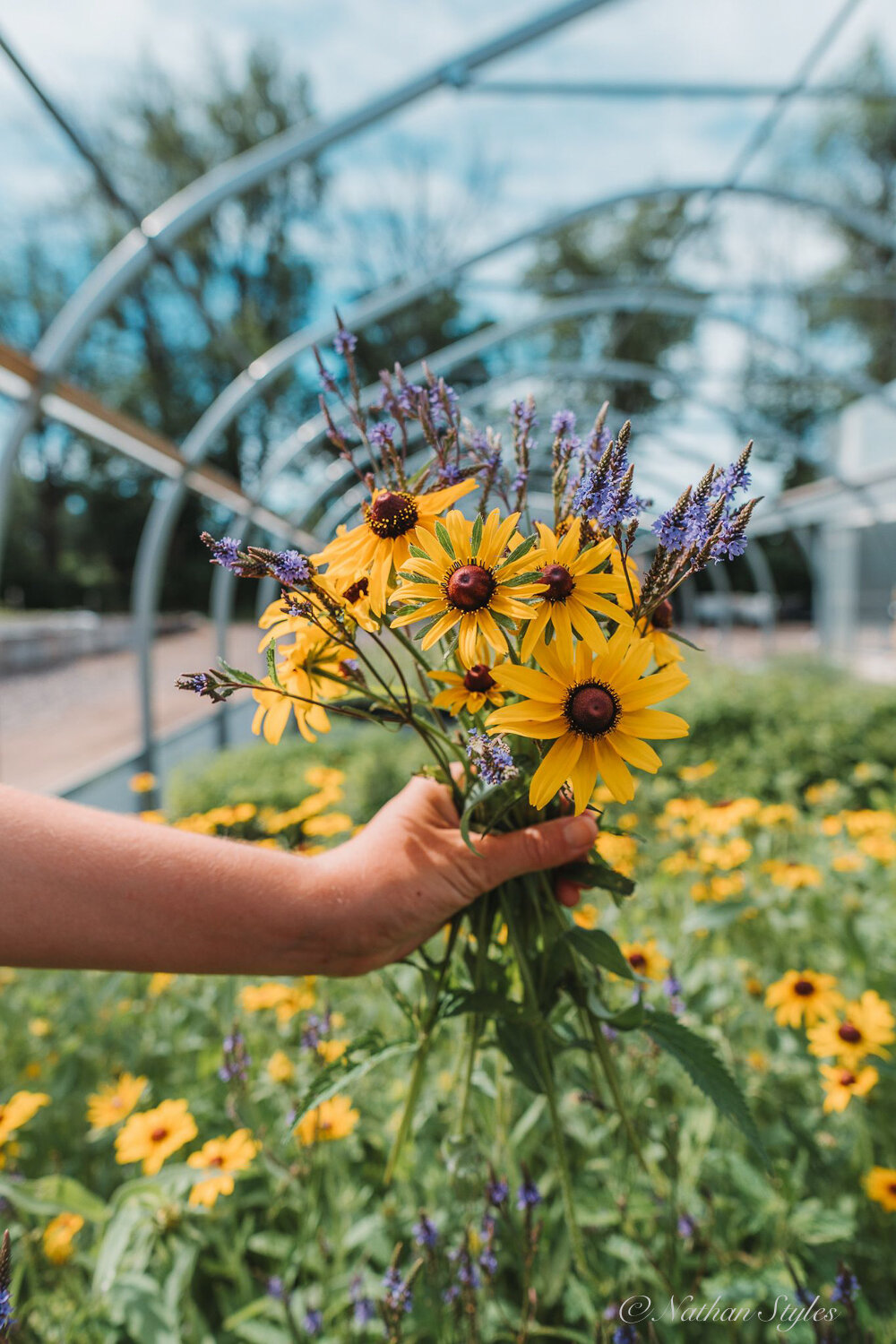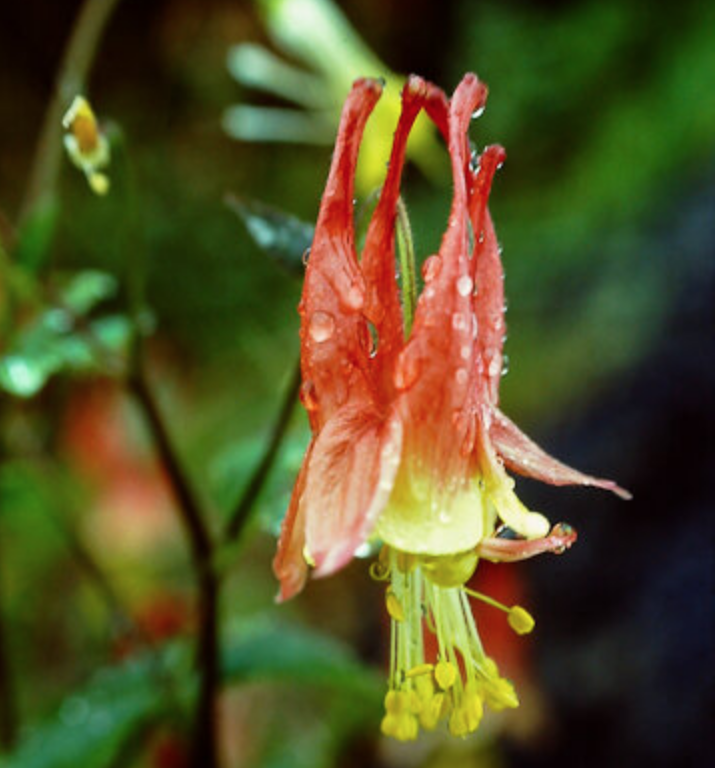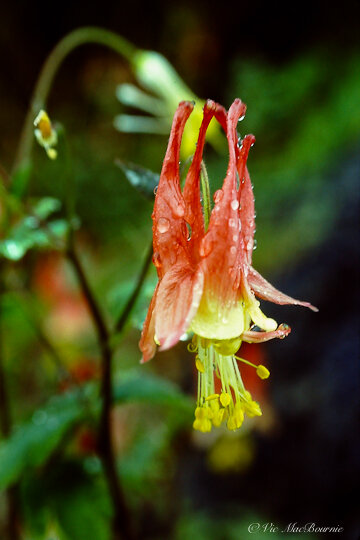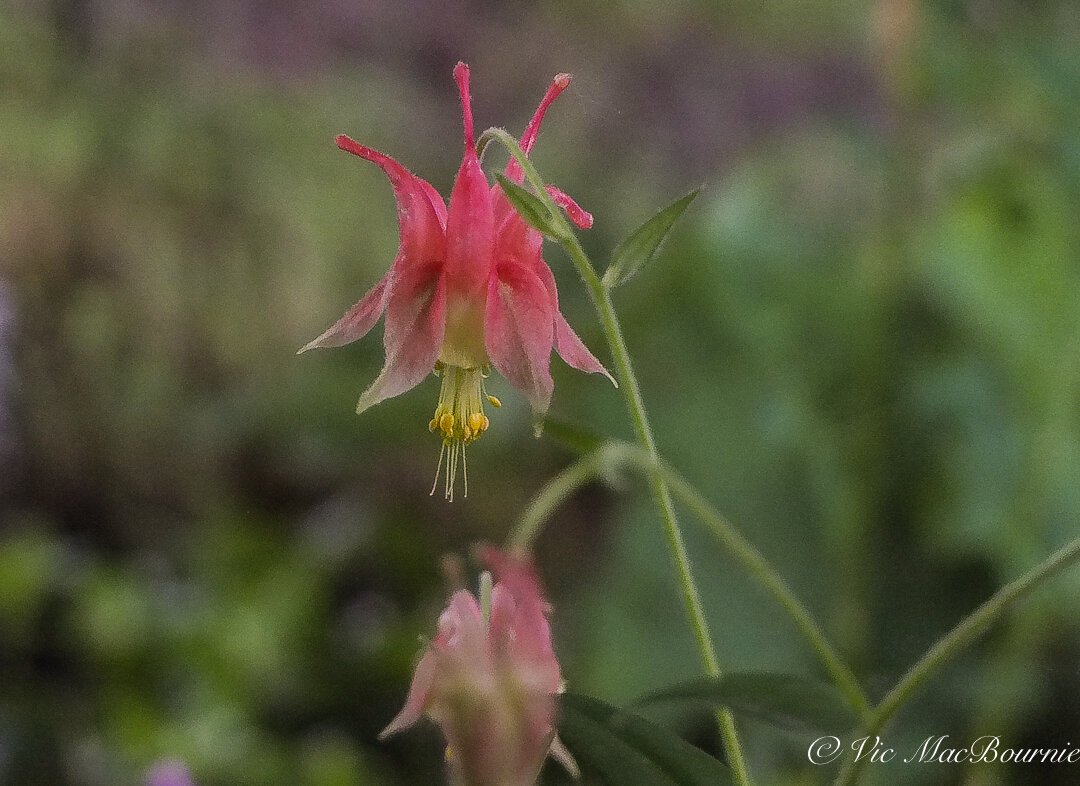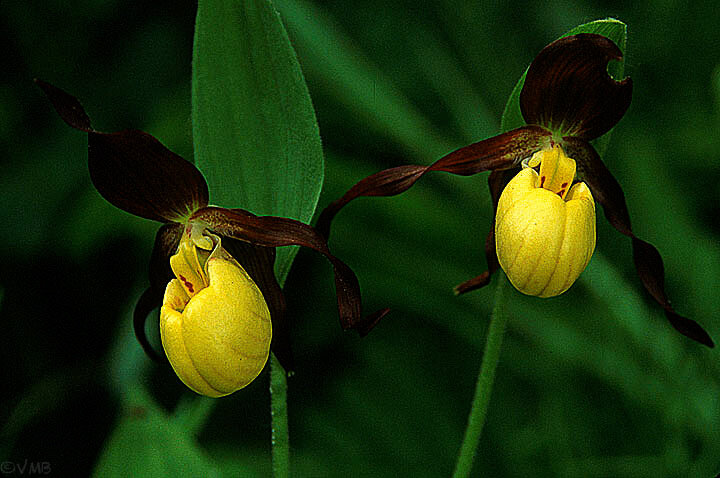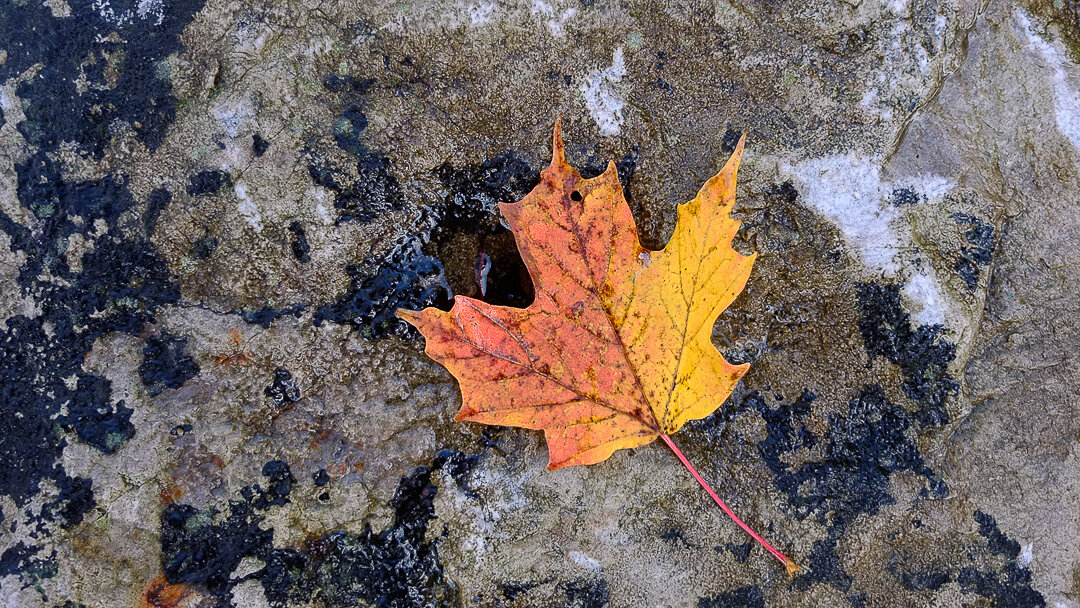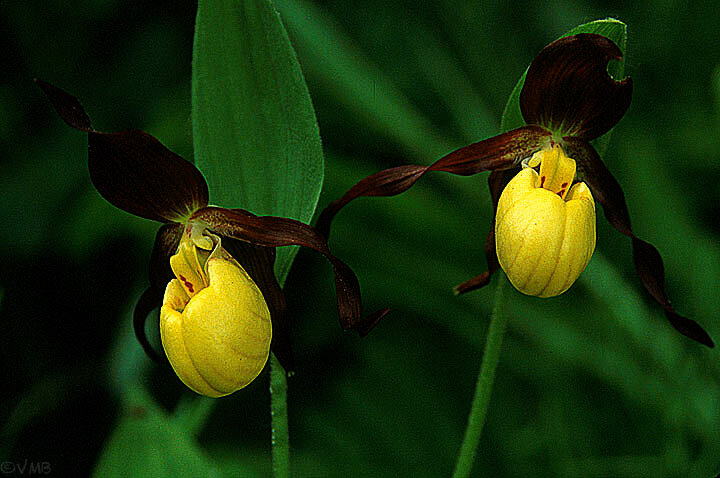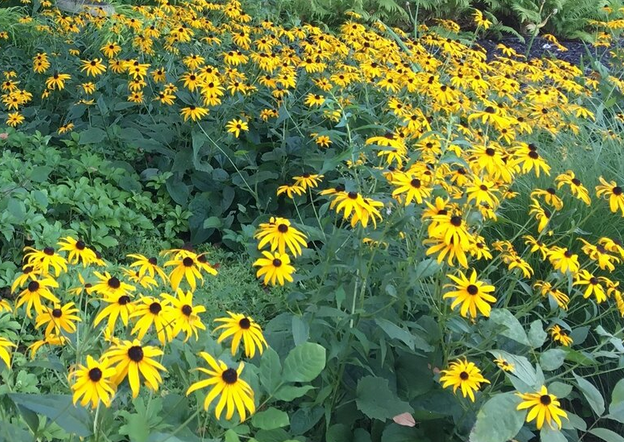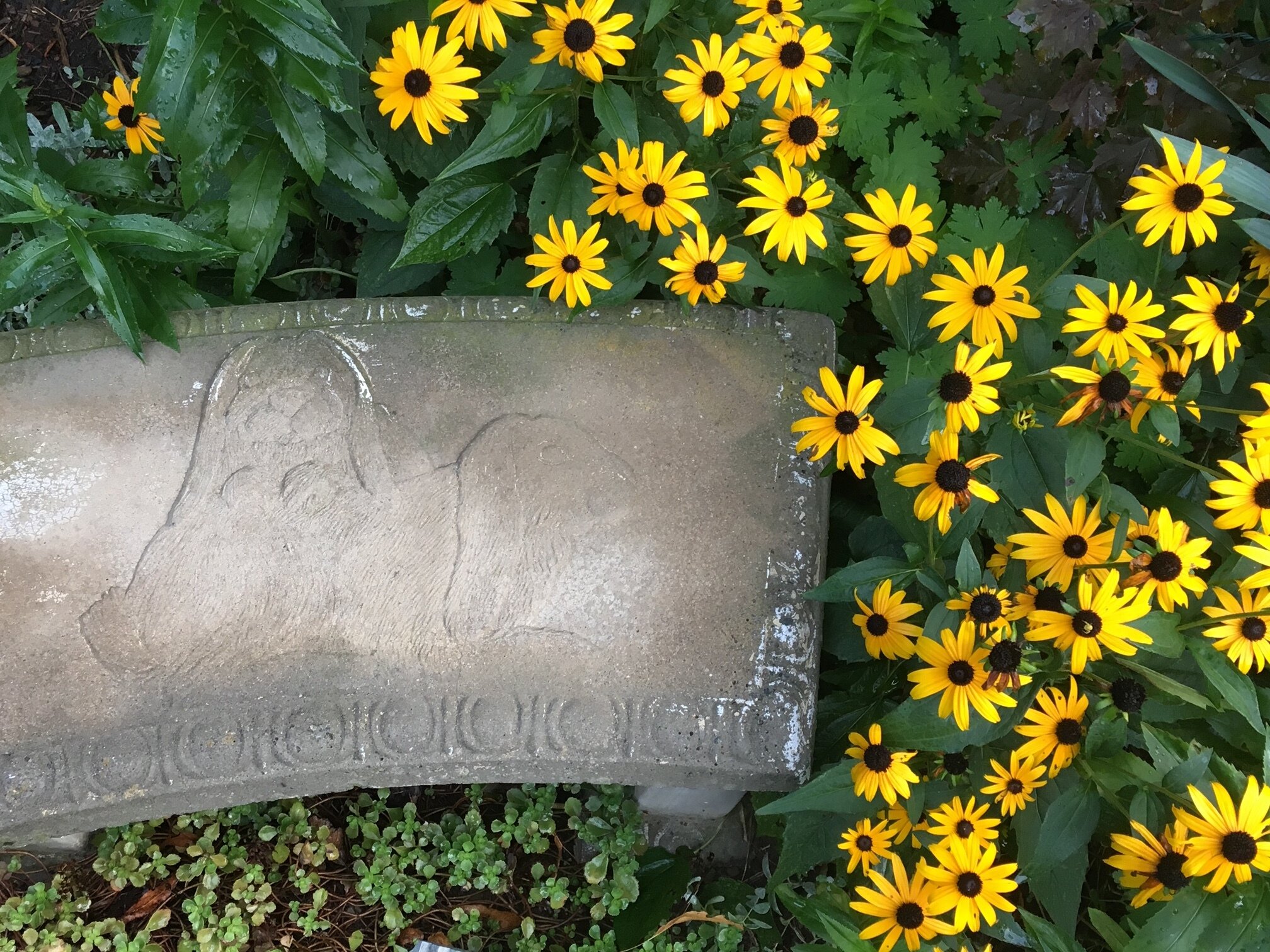Woodland nurseries you need to know about
Not all Nurseries are created equal. Most provide plants your average gardener is looking to plant. But Woodland gardeners and native-plant gardeners are not your average gardeners. Here are four specialty nurseries you will want to check out online if you are looking for special plants or just reliable information on growing plants you already own.
Nurseries specializing in Woodland plants
It’s not always easy to find Woodland plants in your local nurseries. Even if they do carry one or two native woodland plants, there’s no guarantee the plants were not harvested from the wild or that they will do well in your area.
In the past few years since writing the original article, more and more nurseries are carrying more native and woodland plants. In fact, most nurseries are recognizing the move toward more natural and native plants, whether they would be considered “woodland” plants or more sunny meadow-style plants.
Buying from reputable local nurseries is always the best choice, but when they don’t carry what you are looking for or lack the expertise to help you in your Woodland endeavours, there is no shame tracking down nurseries that specialize in hard-to-find native plants.
Here are four that know their stuff (two American-based and two Canadian). All are working hard to offer the best native plants possible. Please recognize that transporting plants across borders is often very difficult or impossible.
Fernwood Nursery & Gardens (U.S.)
Rick and Denise Sawyer have been running “Maine’s Shadiest Nursery” since 2012 in Montville, Maine. Their nursery specializes in native and Woodland plants hardy to their area.
They are proud to say they have one of the largest collections of shade tolerant plant collections in New England, many of which are propagated at the nursery. Display beds at the nursery help demonstrate how the plants can best be grown and grouped together aesthetically.
Wild native showy lady slippers can be difficult to grow. They can be almost impossible to find at regular nurseries, but they are available through responsible specialty growers.
They do not appear to do mail-order, which is unfortunate for those living outside their area. Their down-to-earth blog, documenting life at the nursery is a good read with lots of interesting tidbits for the Woodland gardener. You can find their website at fernwoodnursery.com
Big-time hosta lovers, their website lists close to 20 with good descriptions of each. What really caught my eye, however, was the Cypripedium retinae or Showy lady slipper which they feature in a beautiful photograph showing a massive grouping on their website planted with Maidenhair fern. A glorious combination.
Other featured plants include:
Trillium grandiflorum flora plena – this double flowering great white trillium prefers a sweeter soil and more sun than most trilliums. Being sterile, the flowers bloom longer than the single and then turn from white to pink.
Sanguinaria canadense multiplex – a double flowering form of our native bloodroot that blooms a little later and much longer than the single. Grows to 6″ and tolerates drier shade.
Anemonopsis macrophylla – a wonderful Japanese woodlander with nodding lilac and white flowers on 3′ stems in late summer.
Anemonella thalictroides – ‘Snowflake’ A 6″ double flowering selection of our native. Two months of bloom beginning April/May.
Convallaria ‘Cream da Mint’ – larger leaves have gold edges on green centers with a glaucus coating, especially in the spring.
Convallaria ‘Fernwood’s Golden Slippers’ – leaves are all gold with white flowers and red fruit. Not as aggressive as most Lily-of-the-Valley.
Great Lakes Orchids (U.S. Mail order)
Is a family owned tissue culture laboratory and licensed nursery specializing in hardy terrestrial orchids. You read that right. Their orchids are grown in a laboratory using tissue culture techniques. No worries here about wild-dug orchids.
Check them out at greatlakeorchids.com
In fact, this nursery is devoted to the One Test Tube at a Time Initiative, established to share their “services, laboratory, seedlings, plants, and expertise to help save endangered orchid populations.”
There are diminishing plant populations growing in various habitats and areas. For a number of reasons these plant populations are unable to re-establish themselves or fall outside of funding sources that would allow them to remain protected or undisturbed. We would like to see the return to thriving orchid populations for the benefit and enjoyment of all.”
They offer via-mailorder a large variety of orchids both native and non-native selections, including Lady Slipper Orchids, Chinese orchids and European fringed orchids.
Their website says they are branching out with select hardy perennials and bog plants.
Besides their great work, here is the real reason I have included Great Lakes Orchids in this list: The sites Growing Tips for raising Cypripediums is first rate. If you already have native Lady Slippers in your woodland or hope to acquire them at some point soon, you have to bookmark this site and study these growing tips.
If you live in the United States, consider supporting this group by purchasing some of their plants.
Ontario Native Plants (Cda mail order)
And now a plug for newcomer and local mail-order nursery, Ontario Native Plants. A gardening friend and I decided to place an order with this Hamilton-Ontario area online provider of native trees, shrubs, grasses and wildflowers and were pleasantly surprised by not only the product we received but their professional approach. Packaging was first rate. The website says they deliver anywhere across the province of Ontario.
If their website onplants.ca is any indication of how their business will grow in the future, we can expect big things from this nursery. Their 2020 catalogue lists about 100 products. In addition, they have a newsletter notifying regular customers of promotions and native gardening tips.
Since the initial writing of this post, Ontario Native Plants have certainly grown and now offer a huge variety of top-notch native plants to Ontario Gardeners. Their 2023 catalogue can be seen here. Get your orders in early spring for best delivery dates.
For my full story on this outstanding provider of native plants, be sure to check out my posts here.
Included in the list of individual plants are groups of plants packaged together that offer, for example, high-colour impact, fall beauty, as well as shady and sunny rain garden packs. There is a fern package, a pollinator pack and a Prairie pack. As an example, the Sun Lovers pack in the 2020 catalogue includes 12 plants made up of 2 plants from 6 species.
The website is extremely informative breaking down the native plants into light requirements, moisture requirements and soil type. Well done.
This post is not sponsored by any of the above nurseries. As an affiliate marketer with Amazon or other marketing companies, I earn money from qualifying purchases.
Native Moss and Moss-like ground covers for a Woodland, wildlife garden
Moss is quickly becoming a favourite ground cover for Woodland gardeners and those looking to create a Japanese-inspired garden. These top three ground covers are great alternatives to moss when native moss is not an option.
Three moss alternatives for a woodland garden
Maybe it’s just me, but is the gardening world finally embracing native moss as the ultimate ground cover?
The Japanese have worshipped moss for centuries.
Entire gardens centered around the perfect patch of moss, a single boulder and an ancient maple can be all one needs to create a stunning, tranquil and peaceful place.
More of us are looking for those qualities in our gardens, whether it’s a small Japanese-inspired garden or a more intimate area within a larger Woodland Wildlife garden.
The difficulty for most gardeners who love moss comes with growing and maintaining the perfect patch of moss.
The good news, however, is that we have alternatives to moss as a ground cover.
For my article on the importance of using native plants in the garden go here.
Here are three great alternatives if you are looking to create that tranquil, peaceful feeling in your woodland garden. Irish and Scottish moss are obvious choices but don’t overlook the beauty of creeping moss or the numerous Stonecrops available for hot sunny areas in your garden. These alternatives will never replace the true beauty of our native moss, but for many woodland gardeners they will provide the perfect alternative.
A Japanese painted fern creeps out over the flagstones in our front garden with ground covers Scottish moss, Japanese Spurge and Cornus Canadensis (top right).
Irish and Scottish moss as the perfect alternative ground cover
By far, the closest ground cover to real moss is either Irish or Scottish moss (Sagina subulata verna and aurea)(pictured above).
Both are perennials you can buy at most good garden centres, and both deserve prominent spots in our Woodland gardens.
The Irish moss is a more dark green whereas the Scottish moss is golden or chartreuse.
Both have delicate flowers that emerge in late spring, early summer in Zones 6-8.
They can take full sun to partial shade and some foot traffic.
I have used both types to fill the space between flagstone pavers in our front garden. But, because we are blessed with plenty of native moss growing on the property, the real moss is slowly taking over from these moss alternatives.
Once the natural mosses begin to grow in these areas, it’s probably a good time to move the Irish and Scottish moss to a more sunny area where they can spread their soft cushiony perfection elsewhere in the garden.
They are quite shallow rooted and easy to move by simply taking small clumps of it with a little soil and packing it in other areas of the garden.
It can also be used in containers to cover the soil. Put a little in a container and let it spread throughout the summer.
Looking for more information on ground covers? Please check out my other posts on ground covers I use in the woodland garden.
• Three great ground covers for the woodland garden.
Scottish moss growing between the flagstones in our front woodland garden.
Creeping Phlox is a glorious ground cover in all seasons
Creeping phlox is a real favourite in hot, sunny locations.
It really shines in early spring when the normally dark green prostrate plant bursts with lavender flowers.
It’s a real show-stopper in our front garden as it creeps among the grasses and onto the stones of the dry river bed and bumping up against large boulders on one side and blending in nicely with another mossy alternative Creeping thyme.
Creeping Phlox (Phlox subulate) spreads rapidly and, while it puts on quite the display in the spring, it takes a back seat for the remainder of the year forming a perfect dark green backdrop for our blue-green grasses that emerge through the ground cover in this hot sunny, dry area of our garden.
Creeping phlox among the rocks and grasses in our front garden.
This herbaceous perennial grows in zones 3 to 9 in a rich, well-drained soil and comes in pink, red, white, blue rose and lavender.
It’s a tidy plant that grows up to about 6 inches high with a spread of up to 2 feet for a single plant. It forms a thick mat and for Woodland gardeners it’s deer resistant. That alone should put it high on our list of plants.
Creeping phlox likes full sun but tolerates some shade. An added bonus is that it also attracts butterflies and provides an early food source for insects in the spring where it is one of the first to bloom.
This image shows the stonecrop beginning to bloom with its yellow flowers growing behind and around the container planting.
Best sedum/stonecrop plants as ground covers
Many of us are familiar with Sedum Autumn Joy. It’s a wonderful plant that provides year-round interest and is one of only a handful of plants recommended for the New American Garden. Just to make it clear, we are not talking about that popular type of Sedum here.
There are up to 500 individual species in the Sedum genus, often called stonecrops, some of which are native to zones 5-6 and beyond.
When it comes to ground covers in hot, dry areas, these ground cover Sedums are tough to beat. Of particular note is Mossy Stonecrop (Sedum acre), which is a non-native that has a lovely yellow flower in summer and grows well in hot, sunny locations.
I use them in an area of the garden that forms a pathway across the back of our home. It’s covered in pea gravel with a dry-river bed and blue square-cut flagstone.
The sedum ground covers spill over the edges of the garden into the pea gravel softening the edges with a moss-like texture that has the added benefit of lovely yellow flowers in the summer that the bees and butterflies flock to in large numbers.
The sedum mats are easy to control and thrive in the hot, dry soil. There is just too much to say about sedum as a ground cover in this blog. I encourage you to talk to your local garden nursery experts for advice.
For more information, check out Ontario Wildflowers.
This page may contain affiliate links. If you purchase a product through one of them, I will receive a commission (at no additional cost to you) I try to only endorse products I have either used, have complete confidence in, or have experience with the manufacturer. Thank you for your support.
The Mayapple: Carolinian zone woodland native wildflower
Early spring is the time for Mayapples to spread out across the forest floor and our woodland gardens. The spring ephemerals are native to southern Ontario and northeastern United States but stretch as far north as Quebec and as far south as Florida.
Tips for growing Mayapple in the woodland garden
Inspiration in the garden comes from many sources.
Gardens around our neighbourhood are often a good starting point. So too are our favourite gardeners on social media like Instagram and Youtube. The gardeners I follow are a constant source of new ideas and inspiration.
But for woodland gardeners the best source of inspiration is undoubtedly a local woodlot full of native plants trees and shrubs. (For article on the importance of native plants in the garden go here.
My woodland Mayapple inspiration can be traced back 20, maybe 30 years when, as a nature photographer, I roamed the woods in southern Ontario photographing wildflowers and anything else I could focus on.
That’s where I first encountered the Mayapple (Podophyllum peltatum).
This lovely swath of Mayapple grows wild near our home. When I stumbled upon it in the early spring it inspired me to consider growing large swaths of the ephemeral, underutilized native wildflower in our woodland garden.
Mayapple is one of the first Carolinian zone wildlflowers to emerge in the spring in the woodlands of southern Ontario and the northeastern United States, so it became a magnet for many of us photographers just looking for something, anything, to focus on in the early spring woodlands.
So, you can imagine that it didn’t take long for me to start growing a clump in my yard. Turns out it was so successful that I was able to spread it around where it continues to thrive in swaths throughout the garden.
The Mayapple is actually in the Barberry family and grows naturally everywhere in the eastern half of the United States stretching as far north as Quebec and south to Florida and Texas.
You’ll find Mayapple most often growing in moist, open woods and often growing on the edges of boggy meadows in zones 3 to 8. Although it enjoys moist woodlands, it does well in dry woodlands where, once colonized, can tolerate some drought.
These handsome plants are not just lookers, they are a larval host plant for the golden borer moth and the Mayapple borer.
Large colonies of Mayapple can be found growing from a single underground rhizoid stem where the central stalk of the plant emerges wrapped in either a single tightly furled leaf or a pair or more of leaves that slowly unfurl revealing mature specimens stretching 14 to 18 inches (30-40 cm) in height and blanketing large patches of ground completely shading the forest floor. The single leaf stems do not produce a flower or fruit, while the stems with two or more leaves produce 1-8 flowers in the axil between the leaves. The umbrella-like leaves can spread out 20-40 cm in diameter with 3-9 shallow to deeply cut lobes.
Any other plant with deeply-cut leaves like the Mayapple would be a superstar in most gardens but our native Mayapple suffers from a lack of notoriety in most traditional gardens.
Its beauty is certainly subtle.
Unlike the trillium that shines on the forest floor and lets all of us know when it’s in bloom, the Mayapple goes to great lengths to disguise its flower and the resulting fruit (a small golden apple-like fruit), even creating an umbrella to hide its large white flower from peering eyes.
Much like a hosta in a traditional garden, the Mayapple is mostly a quiet groundcover in the woodland garden. In fact, if you don’t get down on your hands and knees and peek under the large umbrella-like leaf, you may never even know that the plant is sporting a flower in the early spring and yellow fruit in the summer through fall.
Where to plant Mayapple in our garden
But that’s okay. We all need a little quiet in the garden and that’s where the Mayapple really shines.
As I write this in late April, my woodland garden is quite bare. But the Mayapple have already poked their heads out of the soil and are unfurling their large leaves to create a lush sea of green that continues to spreads each year throughout our woodland.
Anywhere in the garden where you have open shade or dappled sun and are looking for a natural groundcover is a good spot to consider planting Mayapple. Although it is considered a spring ephemeral and will go dormant in the summer, its spent leaves, stem and fruit are on display for a good part of the year.
Like many spring ephemerals, Mayapples like moist, humusy well-drained, slightly acidy to neutral soil.
The fruit ripens by late June into July and provides a food source for the fauna in our garden.
“Growing a natural habitat garden is also one of the most important things each of us can do to help restore a little order to a disordered world.”
Also known as Mandrake or the ground lemon, it’s important to note that the Mayapple is a toxic plant. The fruit, even the seeds of the fruit can be toxic. As the fruit ripens it becomes less toxic but unless you do your homework on this plant, it is best to grow it for the fauna in the garden rather than consider it edible in any way.
Chances are the neighbourhood raccoons and squirrels will get to the pungent odor of the ripened fruit long before you do anyway. The fruit ripens by late August and is a real treat for the deer and chipmunks in our garden who know precisely when it is safe to eat.
If you have not yet tried Mayapple in your woodland garden, consider growing a few plants in a quiet, shady corner of your garden. It won’t take long before you appreciate this seldom used plant for its early spring carpet of green, and interesting large leaves that will ring in your spring woodland garden.
Don’t be surprised if it makes itself at home and forms a lovely spring carpet of green right at the time you are craving a little green growth in the garden.
More links to my articles on native plants
Why picking native wildflowers is wrong
Serviceberry the perfect native tree for the garden
The Mayapple: Native plant worth exploring
Three spring native wildflowers for the garden
A western source for native plants
Native plants source in Ontario
The Eastern columbine native plant for spring
Three native understory trees for Carolinian zone gardeners
Ecological gardening and native plants
Eastern White Pine is for the birds
Native viburnums are ideal to attract birds
The Carolinian Zone in Canada and the United States
Dogwoods for the woodland wildlife garden
Bringing Nature Home by Douglas Tellamy
A little Love for the Black-Eyed Susan
As an affiliate marketer with Amazon or other marketing companies, I earn money from qualifying purchases.
Three spring wildflowers for the woodland garden
Spring is a magical time of year and nothing says spring more than the ephemeral wildflowers that emerge early and then disappear only to return the following spring. Here are three of my favourite.
Cultivating a love for Ephemerals
Spring ephemerals are often the first thing we think about when it comes to a woodland garden.
You know, those flowers that suddenly appear in early spring and quietly disappear almost as quickly as they appeared until re-emerging the following spring. In the meantime, they provide an essential early source of nectar for many of our pollinators and kick off the official woodland gardening season.
The diminutive Hepatica, the well-loved Trillium, and the aptly-named Bloodroot are three easy-to-grow spring wildflowers to plant in your woodland garden. All three will give you an early bloom, with the Hepatica adding lovely little hits of colour combined with its hairy stems and purple flowers.
Let’s take a closer look at all three of these woodland wonders.
(For my article on the importance of native plants, trees and shrubs, go here.)
The delicate nature of this Bloodroot flower and other spring ephemerals light up the woodland garden in early spring before they quietly disappear only to return the following spring.
Hepatica (Hepatica nobilis)
I remember going out into the woods around our home looking for the perfect Hepatica to photograph. My photo friends and I would crawl around the wet forest floor examining the delicate flowers (actually members of the buttercup family) trying to find the perfect specimen. They would emerge in early spring before the trees leafed out and when the ground was still wet from the melting winter snow. They opened only on sunny days and we would have to bring along a small mister to dampen the surrounding leaves and darken them for the photograph.
That just gives you an idea of how early you can expect these wildflowers to bloom.
Although Hepatica are native to Europe, Asia and eastern North America, our hunting grounds were the hardwood forests of southern Ontario. Theses small evergreen plants appeared, often tucked among the limestone rocks and fallen tree trunks in shades of pink, purple, blue or white sepals sitting atop the three green bracts on very hairy stems. In the United States, they are often found growing in rich woodlands from Minnesota to Maine and even as far south as Northern Florida and west to Alabama.
Spring in the woodland. Hepatica clump growing up against moss-covered limestone rock.
Hepatica nobilis is the plant found in Eastern North America, Europe and Japan, but other varieties, namely obtusa and var. acuta can also be found in North America.
There is nothing like a macro shot of a delicate, blue Hepatica with the sun streaming in from behind the flower and lighting up the delicate hairs along the stems of the plant. To get these shots we had to get low, very low. These flowers rise up only a couple of inches from the ground at best and don’t really flower unless they are getting at least some sun. Great specimens were not easy to find. Adding to the difficulty was the fact that we were capturing these images in the days of Kodachrome or Fuji Velvia with ASAs of 25 and 50.
Those days are done. Modern digital cameras open up the possibilities of capturing these wildflowers in very creative ways. And there is no real need to go into the forest to find these flowers when you can just go into your own backyard to experience them.
Hepatica hybrids have been cultivated in Japan going back to the 18th century. There are Youtube videos exploring the Japanese fascination with these flowers. This obsession is not hard to understand considering the delicate nature of the plants and how well they fit in to a Japanese-style garden. The Japanese have long perfected the hybrids with doubled petals in a range of colour patterns.
Although the hybrids can work in a woodland garden if you want a little more showiness, I always try to get the native wildflower or species plant (Hepatica nobilis)
Remember those Hepatica I photographed years ago? They were growing in alkaline limestone-derived soil. These flowers are not overly particular about where exactly they grow and can be found in a range of conditions, from the deep shade of a woodland to a grassland in full sun. They are most happy in a shaded location with rich organic soil and will live for many years. Once established, they will form colourful clumps of flowers that will bloom early in spring alongside even your crocuses. They are happy in both sandy and a clay-rich soil. What Hepatica really need for success is a covering of snow in winter and an evenly moist soil throughout the year.
Gardeners on a budget can grow Hepatica from seed, however be prepared to wait several years for the plant to bloom. Divided plants will also take a few years to recover and thicken up.
The perfect place to sit and enjoy the spring Trilliums in our front garden.
Trilliums (T. grandiflorum)
It’s hard to imagine a woodland without Trilliums. Easily recognized by their three petalled white flowers surrounded by a whorl of three green leaves, these early spring bloomers have long been a favourite of gardeners looking to celebrate spring.
Although there are more than 40 trillium species, with varying colours ranging from white to yellow, maroon and approaching nearly purple, most are familiar with the white trillium (T. grandiflorum).
Trilliums nestled in around a fallen birch branch in this natural woodland scene.
During those same photographic outings with my buddies we would often stop by the “Trillium Trail” at a local provincial park that was literally covered with thousands of Trilliums in all shapes, sizes and interesting variations. It was always an impressive site but in some ways overwhelming to photograph. So many Trilliums, so little time.
If given proper growing conditions, Trilliums are relatively easy to grow and are long-lived in our woodland gardens. Provide them with an organic-rich soil that is well drained but kept moist all summer. The flowers will bloom early before the trees are all leafed out, and become dormant by midsummer.
Trilliums do not transplant well if they are dug up from the forest floor, so always purchase Trilliums from a reputable nursery.
Gardeners on a budget can propagate Trilliums from seed, but expect to wait up to five years before you begin to see blooms. Seeds sown in the garden will not even germinate until the second year. Propagating trilliums by rhizome cuttings or, even better, division when the plant is dormant is probably an easier way to go.
A bloodroot flower tries to emerge from its leaf that wraps around it like a glove in the early spring garden.
Bloodroot (Sanguinaria canadensis)
Every spring I watch for the Bloodroot to emerge in our front woodland garden beneath the Serviceberry tree and one of our Japanese Maples. They are growing beside a large limestone boulder tucked in and among ground covers that hide the emerging plant until just before they bloom. I’m often surprised to suddenly see the lovely white blooms with the sunny yellow center.
My sudden encounters every spring is not a surprise since the Bloodroot flower emerges from the ground on a single stem wrapped up in their own single, large leaf. The white multi-petaled blossom may even begin opening before the leaf has completely unwrapped. The bloom, which can stretch upwards of 12-14 inches high, manages to rise just slightly above the leaf before opening. On a sunny day the white flower with its blood-red stem and roots, opens to reveal its stunning flower only to close up again at night.
A selective focus image of a Bloodroot flower emerging in the spring garden.
Our native bloodroots are members of the poppy family. Like other ephemerals they are only in flower for a fleeting time in spring before they disappear again only to rise up again the following spring.
Bloodroots spread rapidly and can make an excellent ground cover. And here is an interesting fact, seed dispersal is primarily done by ants.
You can expect to find them growing wild in moist woodlands throughout the U.S. and Canada from Eastern Quebec to Manitoba and south to Florida, Alabama and Texas.
For gardeners on a budget, the best method of propagation is by seed. It is best to plant the seeds immediately after you collect them, usually in early to mid-June. It’s also important to ensure the seeds do not dry out. This is a good reason to harvest your own seed rather than using commercially available stock.
More links to my articles on native plants
Why picking native wildflowers is wrong
Serviceberry the perfect native tree for the garden
The Mayapple: Native plant worth exploring
Three spring native wildflowers for the garden
A western source for native plants
Native plants source in Ontario
The Eastern columbine native plant for spring
Three native understory trees for Carolinian zone gardeners
Ecological gardening and native plants
Eastern White Pine is for the birds
Native viburnums are ideal to attract birds
The Carolinian Zone in Canada and the United States
Dogwoods for the woodland wildlife garden
Bringing Nature Home by Douglas Tellamy
A little Love for the Black-Eyed Susan
Native moss in our gardens
This page contains affiliate links. If you purchase a product through one of them, I will receive a commission (at no additional cost to you) I try to only endorse products I have either used, have complete confidence in, or have experience with the manufacturer. Thank you for your support.
Ontario Native Plants: Taking back nature one garden at a time
Reyna Matties and Ontario Native Plants is saving our natural environment one garden at a time. The Hamilton-based native plant on-line store offers more than 100 plants, shrubs and trees native to Ontario and the Carolinian Canada forest zone to shoppers on their informative on-line catalogue.
McMaster grad brings native plants to Ontario
Reyna Matties knows her native plants, and she knows how important they are in urban revitalization, restoration and sustainability.
The 30-year-old manager of Ontario Native Plants (onplants.ca) is using that wealth of knowledge in her mission to bring back native plants to Ontario one garden at a time.
For my article on why native plants are important in the garden, go here.
What is Ontario Native Plants?
Ontario Native Plants (onplants.ca) is a Southern-Ontario mail order company, based out of Hamilton, that specializes in providing an impressive selection of native plants, shrubs and trees to Ontario residents. They offer more than 100 varieties of native plants. To ensure clients get only the hardiest plants native to their agricultural zone, Ontario Native Plants only delivers to Ontario residents.
It all started for Matties at McMaster University in Hamilton, Ontario where she earned a bachelors of Science (Environmental Science) and a Masters of Science (Biology). But it wasn’t until she embarked on her Masters thesis project that her love of native plants took root.
Her thesis focused on analyzing the success of a new parking lot restoration project on the McMaster campus. Part of the restoration involved the extension of a riparian buffer to protect a creek habitat from water runoff of a large campus parking lot.
“Being able to provide habitat and a food source for the local wildlife that visit your yard is such a beautiful and important motivation.”
The creation of the buffer called for the extensive seeding with a mixture of hardy prairie native plants (rye, bergamot, rudbeckia, etc.). Plant and soil studies were done to assess the success of the restoration (i.e. proportion of native to non-native plants).
Reyna Matties with a selection of native wildflowers from the ONP greenhouses.
The research created an impressive native-plant knowledge base and she landed the manager’s position for the small upstart company in 2019. Ontario Native Plants actually started in 2017, the same year Reyna graduated from McMaster. The job seemed too perfect to be true, combining her education with a desire to make a significant environmental impact.
The McMaster project, Reyna explains, “grew an interest of mine in urban planting and green infrastructure in cities. More specifically, I became interested in how people perceive restoration work and planting native in general.”
“I wanted to work at a plant nursery or business that helped with ecological restoration, or connecting home owners to native plants. The ONP manager job ticked all my boxes of what type of work I wanted to be involved in, and also provided a diversity of roles to learn from in a new small business.”
A bouquet of wildflowers from ONP.
Needless to say, the business literally took off after Reyna came on board in the spring of 2019. Today, the on-line mail order business is enjoying great success with a strong on-line social media presence and word-of-mouth advertising.
In 2019, ONP had a crew of about four people during the busy period between May and June. For 2020 that number almost doubled to about seven people and Reyna says that number is expected to grow again in 2021.
“The last two years (2019 and 2020) have been very important for our growth as a business,” Reyna explains.
She has great praise for the staff that have played a key role in ensuring the success of the business.
“The crews have all been such amazing individuals that enjoy working with plants, and bring so much energy to each day,” she explains.
Part of that success is the result of a growing awareness of the environment and the loss of habitat being experienced worldwide. “The interest for planting native is growing,” she explains. “Being able to provide habitat and a food source for the local wildlife that visit your yard is such a beautiful and important motivation.”
The Covid pandemic is also creating more awareness of gardening and the environmental affects of planting native flowers, trees and shrubs.
Reyna looks over some of the many wildflowers in one of the ONP greenhouses.
“With people staying home more in 2020, there was another natural surge in gardening with homeowners having more time and interest in gardening,” Reyna explains. “The physical and mental benefits are mentioned frequently by our customers.”
“With our store being completely online and contactless, we have been able to provide a very efficient way for people to purchase plants for their gardens. We are excited for 2021 and are busy updating our website and getting organized for our opening on March 1, 2021.”
But taking an upstart, online native plants nursery to new heights takes more than good timing and a growing interest in using native plants in the typical backyard garden. It takes both a knowledge of plants and first-rate service.
Ontario Native Plants seems to have found the perfect combination.
I can attest to this after a work colleague and I placed an order with the company last year. Not only were the plants shipped in a timely and obviously caring manner, the product was vigorous and extremely healthy. It transplanted well and produced in its first year. The cardinal flowers I planted proved to be a simply outstanding addition to our garden and helped to draw in a number of hummingbirds and hummingbird moths that worked the flowers from early to late summer providing me with endless chances to capture excellent photographic images in a natural setting.
“Since we are only an online store, we have been able to focus on creating a very streamlined ordering process. Customers can simply create an account, and then add different plants to their cart. The check-out is also very simple, and payment is processed by credit card or Paypal. (Website: onplants.ca)
By delivering only to Ontario, clients can by assured they will receive only the hardiest plants native to their agricultural zone.
“We only ship within Ontario as our business model is to keep the plants in their native range. We also only grow our plants from Ontario sourced seed, so you can be assured that the plants will be well adapted, and also genetically unique. We provide information on each plant’s hardiness zone for you to determine whether it can grow succesfully in the zone you live.”
Success certainly breeds more success, much to the benefit of their clients.
“We have also been able to add a handful of new species each year and, in 2021, we are offering more than 100 species of flowers, grasses, trees, shrubs, and ferns. Pretty exciting stuff!”
An important part of the ongoing success of the business is a growing awareness of the importance of using native plants in typical urban and suburban gardens rather than more showy hybridized versions of the same plants.
“We work to provide as much information in the plant descriptions about the benefits of each plant to the local wildlife, often an important nectar or food source for a variety of butterflies, caterpillars, moths, etc. We also share articles or information on Facebook and Instagram that highlights the importance of native plants,” Reyna explains.
Three reasons to use native plants
What does Reyna consider the three main reasons for using native plants in our gardens?
1. Food source/habitat for local wildlife. From the nectar from a Blue Lobelia flower, to the acorn of an Oak tree, native plants provide a diverse buffet for local wildlife in your garden. Especially in urban areas where green space is limited, bringing native plants into your yard provides “food along the road” for migrating insects, birds, and other small mammals.
2. Ecological connectivity – pockets of native plants in homeowner gardens help weave back together ecosystems that have been removed. This once again could benefit wildlife with corridors for movement or food, habitat, etc. Native plants also contributes to climate resiliency by cooling urban areas with connected patches of trees, shrubs, flowers, etc.
3. Mental and Physical benefits for the gardener – Digging in the soil and taking time to observe the beauty around you. Noticing the small insects that feed on your plants. Moving compost all day and the satisfaction of the physical labour. There are so many ways to enjoy your garden, and then, in turn, benefit from that enjoyment.
This season ONP is adding 19 new plants to its on-line catalogue of more than 100 plants, shrubs and trees. The on-line catalogue lists 59 perennial species, 48 tree and shrub species (For this year’s new plants, look for the ones listed in bold).
A quick look at the website shows perennial flowers ranging from Wild Columbine (see my earlier article here), Wild Ginger, three types of Milkweed, two types of Joe Pye, Asters, Wild Strawberry, Bottle Gentian, Woodland Sunflower, Rose Mallow, False Solomon’s seal, two types of Beebalm, Yellow Coneflower and Black-eyed Susan.
Grasses listed include Big and Little Bluestem, Switchgrass, Bottlebrush Grass and Indian Grass. Carexes include Bebb’s sedge and Fox sedge. Four ferns are listed including Lady Fern, Marginal Wood Fern and Sensitive Fern.
ONP has an impressive list of 23 trees listed for sale, including Alternative Leaved dogwood, Tulip tree, Eastern Red Cedar, Paper Birch, Paw Paw (see my article here), Eastern redbud (see my article here), Eastern Hemlock, Tamarack, White Cedar and Bur Oak.
There are 25 Shrubs listed including Serviceberry, Black Chokeberry, Flowering Dogwood, two types of Sumac, Elderberry, Lowbush Blueberry and Nannyberry.
Besides individual plants, shrubs, trees and grasses, the catalogue also offers gardeners “plants packs,” perfect for gardeners planning to plant a larger area with more specialized needs. For fern lovers, there are a number of packs offering assorted ferns, or packs of four specific fern types such as lady fern, sensitive fern or wood fern.
In addition, there is a plant pack focused on rain gardens.
The catalogue is organized to provide plenty of assistance to seasoned gardeners as well as novice native gardeners. Not only are the plants broken down according to light requirements (partial shade to shade, full sun, sun to partial shade…) it is also broken down according to moisture requirements and soil type.
Reyna works in one of the greenhouses at ONP headquarters in Southern Ontario.
New gardeners or gardeners new to ordering through ONP should be aware that many of the plants sell out over the course of the spring and summer, so they may want to get their orders in early.
Last season Lowbush blueberry, Elderberry, Pawpaw Tree, Butterfly milkweed and Wild lupine sold out.
In addition to native plants ONP also sells trees and shrubs. In Spring they offer 1-year-old plants, and then by late summer start selling a 4-month-old crop from that year. So trees and shrubs don't sell out as quickly throughout the year.
“With perennials (Flowers, grasses, ferns) there is only one crop seeded either in the prior fall or Spring, so we are able to order more as quantities permit, but those are more in demand. This is why we emphasize ordering as soon as you can to ensure you get the variety you were hoping for in Spring.”
How to place an order
ONP start taking orders on March 1st. Then, begin to ship orders with ONLY trees and shrubs in mid April. All other orders begin to ship in early May. It is essentially a queue so the earlier you order, the earlier your plants will likely be shipped in May.
Ontario Native Plants offers an updates page (https://onplants.ca/updates/) where they post information on what order numbers are shipping and good tips on making up your order.
Western Canada readers should check out Saanich Native Plants
Ferns & Feathers readers in Western Canada, specifically British Columbia, should check out Saanich Native Plants. They grow plants and produce seeds native to a variety of habitats in the Victoria area, including meadows, woodlands, forests, wetlands, beaches and more.
Their impressive website states they aim to inspire and empower people to restore and conserve nature by providing native plants, seeds, education and expertise.
“We’ve built our business on the core principle of valuing nature. We try to continually work with integrity and excellence and value collaboration greatly.”
More links to my articles on native plants
Why picking native wildflowers is wrong
Serviceberry the perfect native tree for the garden
The Mayapple: Native plant worth exploring
Three spring native wildflowers for the garden
A western source for native plants
The Eastern columbine native plant for spring
Three native understory trees for Carolinian zone gardeners
Ecological gardening and native plants
Eastern White Pine is for the birds
Native viburnums are ideal to attract birds
The Carolinian Zone in Canada and the United States
Dogwoods for the woodland wildlife garden
Bringing Nature Home by Douglas Tellamy
A little Love for the Black-Eyed Susan
Native moss in our gardens
As an affiliate marketer with Amazon or other marketing companies, I earn money from qualifying purchases.
Native Eastern columbine: Growing tips for a woodland, wildlife garden
The Native Eastern Columbine is an early blooming red and yellow wildflower that is an important food source for returning hummingbirds and other pollinators. Grow them in your woodland wildlife gardens in average to poor soils in rock gardens, woodland edges or garden borders.
First columbine encounter on Niagara Escarpment
I’ll never forget my first sighting of wild native columbine.
I was hiking along the Niagara Escarpment with my camera and stumbled upon two beautiful clumps of the native plant, columbine, in their prime and growing on the edge of an overhanging, steep cliff.
I had to get a shot of them. So, being young and not too bright, I moved way too close to the cliff’s edge to get the images.
Needless to say I got the shots and survived to tell you about it.
Not the best shots maybe, but ones I’ll never forget.
These wildflowers made such an impression on me that day that native columbines were the first wildflowers I planted in our front woodland wildlife garden more than ten years later.
(For my article on why native plants are vital in our gardens, go here.)
Although the Eastern Columbine may look delicate, the plants are actually quite hardy, living for many years, often in quite harsh environments. When I say my first sight of them was growing on a cliff, I wasn’t kidding. These delicate-looking flowers appeared to be growing right out of a crack in the granite cliffs.
Not only did I plant them in my front garden, I also recreated in my garden – at least as best I could – that same image of the columbines growing on the limestone edge of the escarpment.
Our native columbines grow out of, and next to, a large limestone boulder surrounded by clumps of maidenhair ferns. I originally tucked the plant right up beside the edge of the boulder so that it could draw heat from the rock in early spring. It wasn’t long, however, before a plant emerged from a thin pocket of soil along a crack in the rock. These little guys will find a spot to grow anywhere they can. This plant stays more compact than the one growing in the soil beside the rock, but together they create much the same feeling I experienced so many years ago overhanging the cliff.
Don’t mistake the native Eastern columbine for a delicate wildflower. These early spring bloomers can be found growing in some harsh areas, even out of granite boulders in my front yard or on cliff edges.
Native wildflowers that combine well with columbines
The Eastern columbines looks right at home growing alongside other native woodland plants. Besides the maindenhair ferns, mine also share space with Solomon’s seals, foamflowers and bloodroot where they make an attractive early-spring combination with other woodland natives.
Our native Columbines can also look stunning growing in large swaths all on their own or in large garden borders as a middle-height plant where the flowers growing atop the plants provide an almost ethereal feeling.
The columbines and maidenhair ferns both like moist, well-drained sandy, limestone-based soil. If the columbines are planted in too rich garden soil, don’t be surprised if they put on excessive vegetative growth with weak stems. Instead, plants in sandy-type soils will prosper and grow in a more tight, compact form, surviving for many years. They prefer partly-shaded woodland habitat with calcareous soils that are not too rich. A single plant, while in bloom, can put out a large number of flowers. Columbines will naturalize under the right growing conditions and in a woodland or native plant garden.
Native Eastern Columbine in the garden mixed with ferns, epimediums and sedum.
The Eastern red Columbines, also knows as the wild red columbine, or Canadian columbine, is a relatively low maintenance plant that is actually in the buttercup family (Ranunculaceae). Spent flower stalks can be clipped off to tidy up the plant, but don’t cut the plant back to the ground in case it is being used by host larvae.
Columbines can be attacked by leaf miners that leave serpentine trails in the leaves. They are generally harmless to the native plants.
In the wild, native columbines can be found in open woodlands and rocky areas throughout North America. In Canada they stretch from Nova Scotia to Saskatchewan in zones 2-9. It can also be found through much of the eastern United States.
Because these perennial plants, which grow 20 to 30 inches high, are self propagating, my original planting years ago continues to self seed in the same general vicinity where they were originally planted. More native columbines, were planted last year in a shaded area of our back wildflower garden.
Backlit columbine in spring.
Native columbines, know as the Eastern Red Columbine (Aquilega canadensis L.), bloom from April to July in rocky open woods and slopes, and provide an early nectar source for hummingbirds. The flowers are actually a critical food source for returning ruby-throated hummingbirds in spring where they tend to bloom for about a month beginning in May or June depending on weather conditions.
The Eastern Columbine can grow up to 4 ft. tall but don’t be surprised if yours stay much more compact. You can expect the plants to be more in the 6-12 inch zone if grown in shady woodland consditions in average soil.
The showy, nodding red and yellow flowers have five hollow spurs that point upward and contain nectar that is particularly attractive to hummingbirds and other long-tongued insects. Because the flowers point downward, hummingbirds and insects including bees, butterflies and hawk moths have to come up from below the flowers to obtain the nectar.
Finches and buntings are known to consume the small, shiny black seeds that are contained in five pod-shaped follicles after the bloom period.
The columbine is larval host to the Columbine Duskywing skipper found in Southern Ontario and throughout the Eastern United States. The female skipper deposits eggs under the leaves of the native columbine where tiny caterpillars feed on them until they emerge as the small dark brown, nondescript skippers.
I have found that both the deer and rabbits leave these native plants alone in our zone 6-7 garden. In warmer areas, where the plants are considered evergreen, this may not hold true.
The light green to blue-green leaves of the Columbine are divided and subdivided into threes. The foliage is attractive even when not in bloom and turns yellow in fall.
Our native wildflower can be described as an attractive, old-fashioned plant, but it’s not without its accolades. This erect, open herbaceous perennnial plant has received the Royal Horticultural Society’s Award of Garden Merit.
That makes it a worthy consideration for a spot in your garden. I grow mine both in the front and backyard.
Don’t mistake the very showy European Columbine (A. vulgaris), with their blue, pink, violet and white short-spurred flowers, with our native variety.
The Canadian Wildlife Federation website also lists the following native columbines for consideration depending on the growing zones where you live.
Sitka columbine (A. formosa)
Native to: southern Yukon, B.C. and swAlta.
Habitat: moist to dry open areas such as streamsides, rocky slopes, woods and meadows at subalpine elevations (moist alpine meadows and mountain meadows)
Appearance: up to about one metre (three feet) tall, nodding red flowers and short spurs
Yellow columbine(A. flavescens)
Native to: B.C. and swAlta.
Habitat: moist meadows, screes/slopes and acid rocky ledges at moderate to high elevations (up to just above timberline and higher than A. formosa)
Appearance: a pale yellow flowering columbine with long spurs, sometimes with a pinkish tinge, blooming from late June to early August. Nodding flowers.
Jones’ columbine(A. jonesii)
Native to: swAlta.
Habitat: subalpine limestone screes and crevices
Appearance: a low-growing plant that reaches five to 12 centimetres tall, with leathery, hairy leaves that bunch together to resemble coral. It has only one or two short-stalked flowers that are a blue and typically face upwards.
Blue columbine (A. brevistyla)
Native to: the Yukon, B.C., Alta., Sask., Man. and central Ont.
Habitat: This boreal forest species of columbine grows in rock crevices, meadows and open woods.
Appearance: blue and white flowers, nodding/upright with short spurs
More links to my articles on native plants
Why picking native wildflowers is wrong
Serviceberry the perfect native tree for the garden
The Mayapple: Native plant worth exploring
Three spring native wildflowers for the garden
A western source for native plants
Native plants source in Ontario
The Eastern columbine native plant for spring
Three native understory trees for Carolinian zone gardeners
Ecological gardening and native plants
Eastern White Pine is for the birds
Native viburnums are ideal to attract birds
The Carolinian Zone in Canada and the United States
Dogwoods for the woodland wildlife garden
Carolinian Canada is a diamond in the heart of Southern Ontario
Carolinian Canada is a sweep of land that extends from Toronto to Lake Erie and down through Windsor to Lake Huron. Its diversity of flora and fauna is unmatched anywhere else in Canada. The Carolinian forest also stretches through much of Eastern United States.
A Woodland Gardener’s journey of discovery
I am not sure when my love of gardening took root.
Two factors, however, played a major role in both my love of gardening and how I came to appreciate a Woodland Garden over, let’s say, a more formal style of gardening.
I was in my mid-twenties and working at a large weekly newspaper in the the metro Toronto area when I got my first real taste of the joy of gardening. I remember interviewing the president of the local garden club, touring his lovely suburban garden and sharing in his excitement for the diversity of flowers, shrubs and trees that grew in his garden. It definitely was not a Woodland garden but it left a big impression.
At the same time I was getting more and more involved in nature photography and my weekends were often spent wandering the local forests looking for wildflowers and other subjects that caught my eye. As my photographic knowledge grew, so did my appreciation for the more wild areas where I lived. Photographing trilliums, dog-toothed violets, hepatica, bloodroot and the ultimate photographic subject – native lady slipper orchids – became a spring ritual. In the summer months, our focus shifted to reptiles and mammals that seemed abundant in the ponds, rivers and forests that my photographic friends and I explored.
Fall, of course, was the magical time for Ontario photographers and nature lovers when the forests were blanketed with the spectacular reds, oranges, yellows and ambers of the season.
Carolinian Canada is an important ecosystem in Ontario that needs Woodland gardener’s assistance.
What I didn’t know at the time was that the driving force behind all of this was the fact I lived in one of the most beautiful, diverse and fascinating areas in Ontario. At the time it was just the forest. I later learned that it wasn’t “just a forest,” it was a very specific type of forest that made it special.
It was the Carolinian Canada forest.
Carolinian Canada is a rare gem
It’s a stretch of forest that sweeps from Lake Erie to Toronto, just kisses Guelph and Kitchener-Waterloo before heading up to Windsor and Lake Huron. Carolinian Canada boasts a diversity unmatched anywhere else in the country. From its unusual variety of trees to its rare plants, birds, mammals, insects, amphibians and reptiles, Carolinian Canada is certainly a nature lovers dream.
The Carolinian Canada forest is characterized by the predominance of deciduous trees and actually stretches well into the United States from the Carolinas, through the Virginias, Kentucky, Tennessee, Maryland, Delaware, Pennsylvania, parts of Ohio and New York state to name just a few. In the U.S., the Carolinian zone is commonly called the “Eastern Deciduous forest.”
Yellow lady slippers
Carolinian Canada includes primarily the gardening zones 6-7 and share many of the same fauna and flora.
Trees of note include hickory, oak, walnut, and the tallest of the lot, the tulip tree. In addition, there are the understory trees featuring native dogwood (cornus florida) and the pawpaw tree with it’s large, exotic fruit that tastes very similar to a mango.
In Southern Ontario the presence of the Great Lakes and their moderating influence creates the environment necessary to boast the longest frost-free seasons and the mildest winters of any region in the province.
The outstanding features of the Carolinian Forests in Ontario is also its downfall. The climate, fertile soils and proximity to large fresh-water lakes means that Carolinian Canada is highly developed and includes some of Canada’s most populated cities, intensively farmed agricultural areas and heavy industrialized locations. All this intensive settlement, industrialization and agriculture has led to significant habitat loss and fragmentation, leaving scattered and disconnected parcels of land left to carry on the natural ecology that makes up this important ecosystem.
The Natural Treasures of Carolinian Canada, published by James Lorimer& Company Ltd., is an outstanding resource for Woodland Gardeners who want to explore the Carolinian Canada forest more fully.
I was fortunate enough to be awarded this book as part of being recognized by the Hamilton Conservation Authority Watershed Stewardship Program for the efforts my wife and I have made on our property to care for the land in such a way to maintain a healthy state for today and for future generations. More on that in a later blog.
I took the time this winter to study this almost 150-page book. The book is edited by native plant expert Lorraine Johnson with individual chapters written by experts including naturalists and scientists working at World Wildlife Fund, the Nature Conservancy of Canada, The Royal Ontario Museum as well as many universities and government natural resources ministries.
It explores in great depth the various ecosystems within Carolinian Canada from the plants to the forests, the prairie peninsula and the wetlands. In chapter two, the authors focus on the fauna everything from badgers (yes there are badgers in Norfolk county) and flying squirrels to the birds, butterflies, amphibians and reptiles.
Finally, the authors turn their attention on stewardship and how humans can reshape the land and ecosystem they have played a major role in destroying, or at least bringing to the edge of distinction. These are important chapters; ones that, as Woodland gardeners, we have the opportunity to play a vital role in reshaping.
Woodland gardeners have a say in Carolinian Canada’s future
Whether we garden in a sensitive and highly threatened ecosystem like Carolinian Canada, a prairie grassland, the rolling hills of the mid-west or a desert landscape, all gardeners, but especially Woodland gardeners have the ability to influence the future of these important places.
Wherever you live and garden, there are organizations that work to protect the natural environment. Gardeners fortunate enough to live in Southern Ontario can take advantage of the vast resources and expertise that exists at Carolinian Canada, whose mission is to “advance a collaborative conservation strategy for healthy ecosystems in Ontario’s Carolinian Life Zone.”
The organization’s diverse network works to advance a “strategic ‘Big Picture’ vision for healthy landscapes and a green future in Canada’s deep south.”
Its website (see link above) states that since 1984, Carolinian Canada Coalition has been a leading ecoregional group, bringing together thousands of people and groups who care for the unique habitat network, and to support thriving wild and human communities in harmony for generations.
For our part, my wife and I do our best to plant native trees, shrubs and flowers, but we do not get too hung up on planting only natives. We try to plant fruit- and nut-bearing trees and plants to help local fauna. We put up bird houses on the property, have both above-ground bird baths and on-ground water sources for birds, amphibians and mammals and have a large debris pile to give mammals, reptiles and insects places to harbour over the winter. We have removed all the grass from our front yard and most of it from the back yard. (What’s left in the back yard is a combination of moss, wildflowers with a little lawn mixed in.) Chemicals are rarely used and branches, leaves and garden debris never leave the site.
Not everyone has the space or are willing to keep all the leaves and garden debris on-site, but if we all make an effort to do the best we can, we can play a significant role connecting these fragmented wilder areas and provide corridors for birds, mammals and flora to prosper even in some of the most built-up areas imaginable.
This concept is what Irish garden designer, naturalist and renowned author Mary Reynolds promotes with her gardening-inspired movement We Are the Ark and her book Garden Awakening, which was reviewed on this site in the previous blog.
Woodland gardeners have been building ARKs (Acts of Restorative Kindness) for years. Now we have a reason to celebrate our efforts and work to convince others to join us in celebrating the natural forests where we live.
More links to my articles on native plants
Why picking native wildflowers is wrong
Serviceberry the perfect native tree for the garden
The Mayapple: Native plant worth exploring
Three spring native wildflowers for the garden
A western source for native plants
Native plants source in Ontario
The Eastern columbine native plant for spring
Three native understory trees for Carolinian zone gardeners
Ecological gardening and native plants
Eastern White Pine is for the birds
Native viburnums are ideal to attract birds
The Carolinian Zone in Canada and the United States
Dogwoods for the woodland wildlife garden
Bringing Nature Home by Douglas Tellamy
A little Love for the Black-Eyed Susan
Native moss in our gardens
This page contains affiliate links. If you purchase a product through one of them, I will receive at commission (at no additional cost to you)I only endorse products I use, have complete confidence in or have experience with the manufacturer.
A little love for the Black-eyed Susan
As late summer approaches the Black-eyed Susans begin to come into their own with their bright cheery yellow flowers standing strong in our gardens and in our meadows. Let’s give a little love to these tough, hard-working native plants.
Black-eyed Susans are the perfect low-maintenance garden plant
You gotta love the Black-eyed Susan.
That cheery yellow with its definitive brown or black centre can bring a smile to even the non-gardener’s face, just as other plants in the garden fall victim to the dog-days of summer.
This tough, late summer native plant is as comfortable in our gardens as it is naturalized in grassy meadows.
(The importance of using native plants in our gardens is explored in great detail in my article here.)
In our garden, the hard-working Rudbeckia Hirta takes prominance in both the front, back and side gardens where I have let them naturalize and self-seed. They are just too easy and fun not to grow in our gardens.
Goldfinches depend on them for their late autumn/winter seed heads, and deer, well they pretty much leave them alone once they get past their spring tender young growth and develop their hairy leaves and stems. Butterflies and bees are attracted to Rudbeckia Hirta and the plant is a larval host to three butterflies including the gorgone and silvery checkerspot species.
What’s not to love?
Rudbeckia hirta, commonly called black-eyed Susan, is native to Eastern and Central North America. Its wide range is evident after having been found in all 10 Canadian provinces and 48 states. It’s a member of the sunflower family and a workhorse in the New American Garden along with sedum Autumn Joy and natural grasses. Although most of the plants in our gardens are likely of the perennial variety, there are biennial and annual varieties.
These are heat and drought tolerant native plant
If you are looking for a low-maintenance plant, Rudbeckia hirta is both heat and drought tolerant. It self-seeds and is able to grow in a variety of soils, but prefers a neutral soil pH and a full sun to light shade location. Deadheading, though unnecessary, will encourage more blooms and a stronger, less leggy plant.
The daisy-like flowers can be single semi-double, and fully-double. All, however, sport coarse-textured, scratchy, hairy leaves. Black-eyed Susans work well with Sedum Autumn Joy, purple coneflower and New England asters as well as many of the grasses that have become so popular in our gardens.
An important part of the New American Garden is using plants that perform in summer, fall and winter. Black-eyed Susans certainly meet that criteria. The plants have a strong winter presence in the garden, if the seed heads are left on the plants. Their dark stems give the plant architectural interest all winter and the seed heads covered in snow add a whimsical note to the winter garden.
• If you are considering creating a meadow in your front or backyard, be sure to check out The Making of a Meadow post for a landscape designer’s take on making a meadow in her own front yard.
A few rudbeckia varieties
Here are a few varieties of rudbeckia you might be interested in for your garden:
Rudbeckia fulgida var. sullivantii “Goldsturm” is the standard for Rudbeckia. It is long-blooming and virtually pest free. It grows to about 2-feet tall.
Rudbeckia “Toto Rustic” is a dwarf plant with warm fall colors. Also available is a golden “Toto” and paler “Toto Lemon.” (1 foot tall)
Rudbeckia hirta “Cherokee Sunset” has double and semi-double flowers in shades of yellow, orange, red, bronze and mahogany. It is short-lived but reseeds itself. (2 feet tall)
Rudbeckia hirta “Indian Summer” is daisy-like, with large yellow flowers. It’s short-lived, reseeds itself or it can be grown as an annual. This fella can grow to between 3 to 4 feet tall. Its perfect for the back of the border or for a real statement in the garden.
More links to my articles on native plants
Why picking native wildflowers is wrong
Serviceberry the perfect native tree for the garden
The Mayapple: Native plant worth exploring
Three spring native wildflowers for the garden
A western source for native plants
Native plants source in Ontario
The Eastern columbine native plant for spring
Three native understory trees for Carolinian zone gardeners
Ecological gardening and native plants
Eastern White Pine is for the birds
Native viburnums are ideal to attract birds
The Carolinian Zone in Canada and the United States
Dogwoods for the woodland wildlife garden
This page contains affiliate links. If you purchase a product through one of them, I will receive a commission (at no additional cost to you) I try to only endorse products I have either used, have complete confidence in, or have experience with the manufacturer. Thank you for your support. This blog would not be possible without your continued support.

